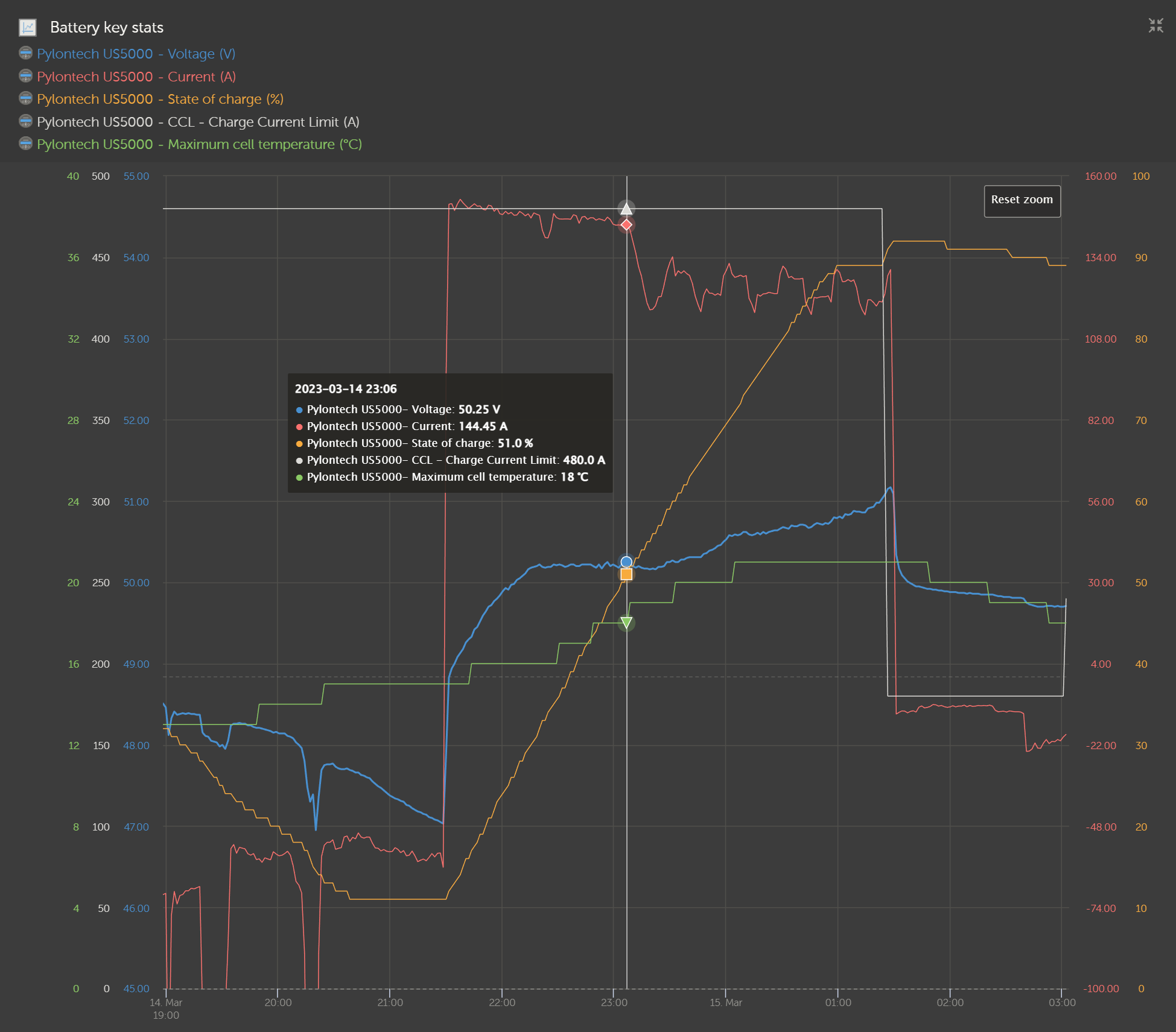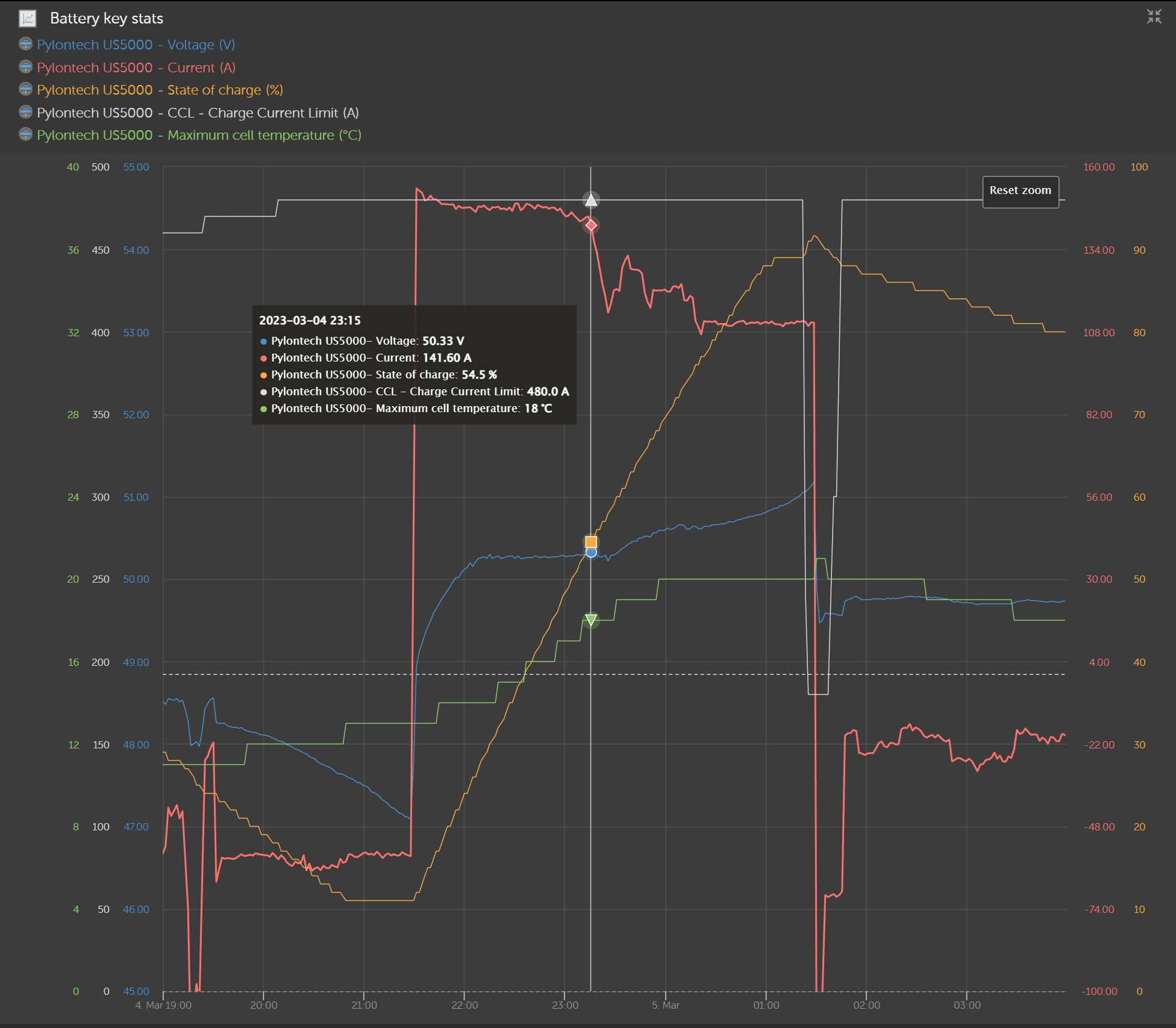I'd like to better understand how charging is managed and hopefully find a way to improve charging speed if possible. I have a four hour cheap rate window in which to maximally charge my battery stack. It is problematic to get the system close to fully charged from its minimum SoC. System is 2x parallel MPII 48/5000/70 with 6x Pylontech US5000.
If I understand correctly, the charging process or, at least the overall parameters for it, are mostly managed by the Pylontech BMS. From the victron doc it clearly states the dynamic charge voltage and charge current limit (CCL) are controlled by the Pylon. I don't however understand *what manages the overall charge current supplied* at any given time. The CCL certainly changes, but only when charging gets close to full SoC ~90%, or if the battery is particularly cold. The system charge level rarely gets close to the CCL.
Looking at the graphs, during the ESS scheduled charge window, charging seems typically to have three phases - an initial relatively high level until ~1.5hrs in and around 50% SoC, then a medium charging phase that bounces around, and finally a very slow charging rate as we approach full past 90% SoC.
What part of the system controls the charge current level?
Why does it drop from the higher current charging to the lower after ~1.5hrs / ~50%?
Is there any way I can influence this control algorithm?
Perhaps the Pylontechs or Multiplus' are doing thermal management to an extent - though it doesn't seem that warm? Pylontech charge derating is supposedly only active outside of ~12C and 43C.
Appreciate any insight into the charge algorithm, and/or comparisons with other peoples systems.
Cheers, Paul.
A good night - starts at 16% SoC and gets to 98%:

Not so good, start 11%, finish 88%:

Start 11% end 92%:

Start 11%, end 92%:

Final example, start 34%, end 98.8% (highest ever seen):

